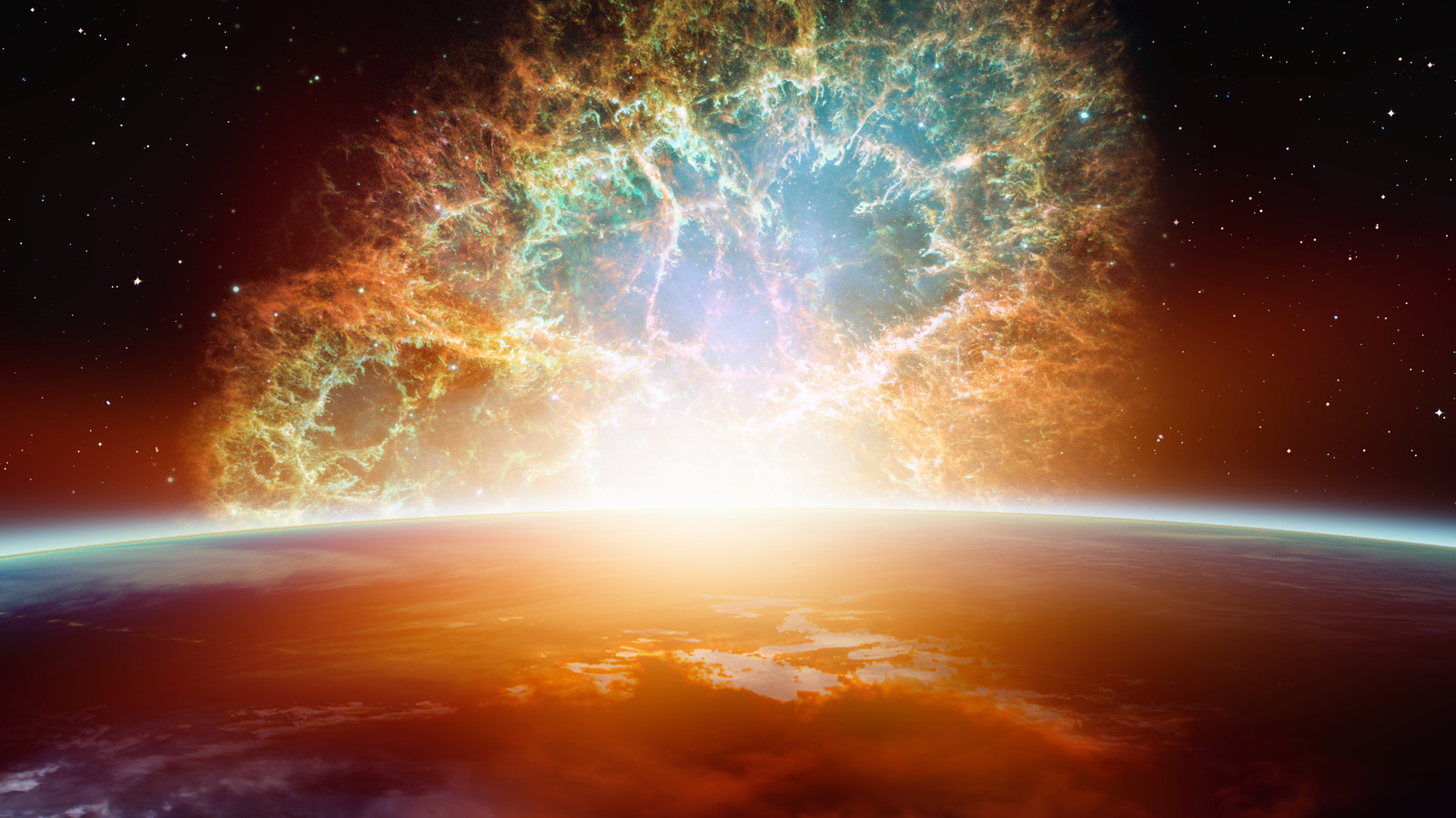
To understand where supernovae get all their power, it’s important to understand how stars work. First, they’re giant balls of burning gas, usually hydrogen, the most abundant element. Stars are so massive that their inward gravitational pull compresses the hydrogen at its core until it fuses into helium. This is the same type of fusion energy that scientists hope to harness as a clean power source on Earth.
A presentation from Caltech explains that the heat and light generated from the fusion in a star’s core push against the star’s gravity. The opposing inward and outward forces cancel out in a temporary equilibrium. Helium eventually builds up in the star’s core, interrupting the fusion reaction and disturbing the overall balance.
For smaller stars, this is where they stop and slowly cool into the far future — that is, unless they’ve got a nearby partner they can steal mass from until they achieve a runaway nuclear reaction (via Space), which is a phrase that, when describing an entire star, leads to a Type Ia supernova. For larger stars, they start burning their helium into heavier and heavier elements until the fusion reactions no longer counteract gravity (via Stanford). The entirety of the star collapses on itself in a matter of seconds and then violently bounces back out into the universe like a stellar bomb — a Type II supernova. With a supernova going off every 10 seconds though, should we be worried?
Stay connected with us on social media platform for instant update click here to join our Twitter, & Facebook
We are now on Telegram. Click here to join our channel (@TechiUpdate) and stay updated with the latest Technology headlines.
For all the latest Entertainment News Click Here
